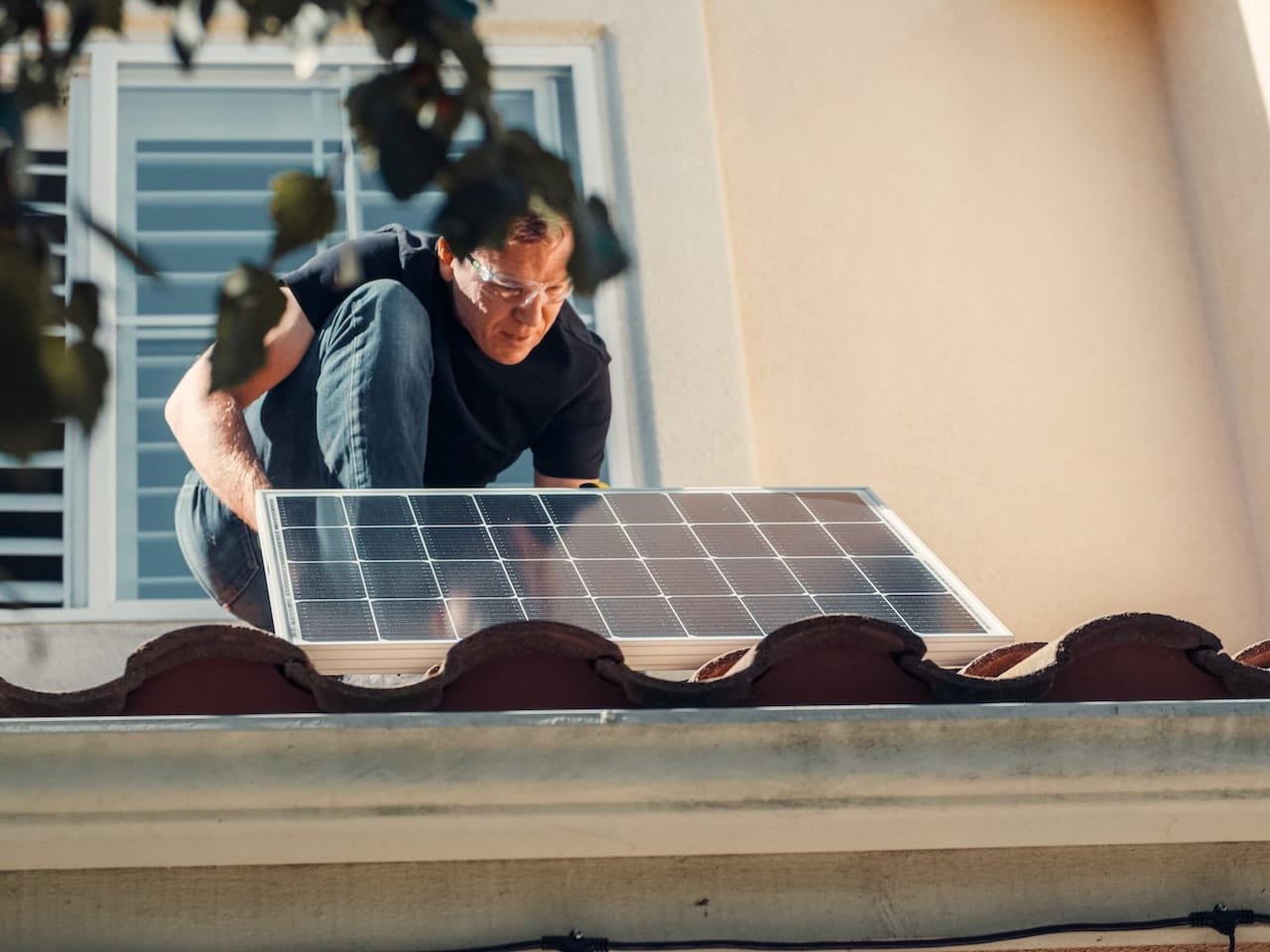Growing concerns over climate change and environmental sustainability in the commercial construction industry in London have led to companies taking significant steps to adopt more sustainable practices. In this article, we will explore how commercial construction companies design, plan, and manage large-scale projects while maintaining a strong commitment to sustainability at every stage of the process.
Sustainable Design Principles
Energy Efficiency
Energy-efficient design plays a pivotal role in reducing the environmental impact of commercial buildings. Sustainable designs incorporate features that minimise energy consumption, such as high-performance insulation, double or triple-glazed windows, and energy-efficient heating, ventilation, and air conditioning (HVAC) systems. By incorporating renewable energy sources, such as solar panels or wind turbines, commercial buildings can further reduce their reliance on non-renewable energy sources and decrease their carbon emissions.
Water Conservation
Water conservation is another crucial aspect of sustainable commercial building design. Commercial buildings are designed to reduce water usage by implementing water-efficient appliances, low-flow fixtures, and water-saving irrigation systems for landscaping. Rainwater harvesting systems and greywater recycling can also be integrated into the design, allowing for the reuse of water for irrigation, toilet flushing, or other non-potable purposes, thus reducing the overall water consumption of the building.
Use of Sustainable Materials
To minimise the environmental impact of commercial construction projects, sustainable materials are prioritised throughout the building process. Construction companies opt for environmentally friendly, locally sourced, and recyclable materials that reduce the overall carbon footprint of the project. The use of sustainably harvested timber, recycled steel, and low-impact concrete alternatives can significantly decrease the environmental impact of a construction project while promoting a circular economy.
Green Spaces and Biodiversity
Incorporating green spaces and promoting biodiversity are essential aspects of sustainable commercial property design. Commercial projects can incorporate green spaces such as rooftop gardens, green walls, and landscaped areas to promote biodiversity, improve air quality, and reduce the urban heat island effect. These green spaces not only enhance the aesthetic appeal of the building but also contribute to the well-being of occupants and the surrounding community.
Flexibility and Adaptability
As the needs of businesses and communities evolve, sustainable commercial designs must be adaptable to accommodate future changes. This means designing buildings that can be easily modified to suit new technologies, changing tenant requirements, or even repurposing the space for different uses. By prioritising flexibility and adaptability, sustainable designs can ensure that commercial properties remain viable and efficient in the long term.
Planning for Sustainability
Environmental Impact Assessments
Thorough environmental impact assessments (EIAs) are conducted during the planning phase of commercial construction projects. These assessments identify potential environmental impacts, risks, and opportunities associated with the project, enabling construction companies to develop strategies to mitigate negative impacts, enhance positive outcomes, and demonstrate compliance with environmental regulations and standards.
Waste Management Plans
An integral part of sustainable planning for commercial construction projects involves developing comprehensive waste management plans. These plans focus on reducing waste generation by implementing measures such as material optimization and just-in-time delivery. Additionally, construction companies establish protocols for reusing and recycling waste materials, minimising the amount of waste sent to landfills and reducing the environmental impact of the construction process.
Sustainable Transport
Encouraging sustainable transport options is a crucial aspect of planning for environmentally friendly commercial properties. Construction projects are designed with facilities that promote the use of public transport, cycling, and walking, such as bike storage, showers, and convenient access to public transport networks. By prioritising sustainable transport, commercial properties can contribute to reducing traffic congestion, air pollution, and greenhouse gas emissions in the city.
Community Engagement
Engaging with local communities is a vital part of planning for sustainable commercial construction projects. Construction companies consult with local residents, businesses, and community groups to address concerns, incorporate feedback, and ensure projects align with the needs and values of the community. This engagement fosters a sense of ownership and collaboration, leading to better outcomes for both the project and the wider community.
Sustainable Construction Management
Sustainable Procurement
Sustainable procurement practices are central to the management of environmentally responsible construction projects. A reputable commercial construction company will prioritise sourcing materials, products, and services from suppliers that demonstrate a commitment to sustainability. This includes selecting suppliers with robust environmental management systems, responsible sourcing policies, and a proven track record of ethical and sustainable practices.
Energy and Water Efficiency
Effective construction management involves implementing energy and water-saving measures on construction sites. This includes using energy-efficient equipment, such as electric or hybrid machinery, and monitoring water usage to minimise waste. By focusing on energy and water efficiency, construction companies can significantly reduce the environmental impact of their operations.
Minimising Pollution and Emissions
Construction companies take steps to reduce noise, air, and water pollution during the construction process. This involves implementing best practices for dust and emissions control, using low-emission construction equipment, and adhering to noise restrictions to minimise disturbance to surrounding communities. By actively managing pollution and emissions, construction companies demonstrate their commitment to sustainable construction management and responsible environmental stewardship.
Protecting Local Ecosystems
Construction sites must implement measures to preserve and protect local ecosystems, such as installing silt fences, sediment basins, and erosion control measures. By carefully planning and managing construction activities, companies can reduce disruption or look to mitigate impacts for local flora and fauna, safeguarding biodiversity and contributing to the long-term health of the environment.
Training and Education
Investing in the education and training of the construction workforce is essential for promoting a culture of sustainability and environmental awareness. Construction companies provide training on sustainable construction practices, environmental regulations, and the use of innovative materials and technologies. By fostering a skilled and knowledgeable workforce, companies can drive continuous improvement in sustainable construction practices.
Post-Construction Sustainability
Building Performance Monitoring
To ensure ongoing sustainability, companies monitor the energy and water performance of their commercial properties. This involves tracking energy and water consumption, identifying areas for improvement, and implementing efficiency measures to continually optimise the building’s performance.
Green Building Certifications
Construction companies pursue green building certifications, such as BREEAM, LEED, or WELL, to demonstrate their commitment to sustainability and provide a benchmark for ongoing performance. These certifications offer a framework for assessing and improving the environmental performance of commercial properties, driving the industry towards higher standards of sustainability.
Tenant Engagement
Property managers play a crucial role in maintaining the sustainability of commercial properties by engaging with tenants to promote sustainable practices. This includes providing guidance on waste reduction, recycling, and energy conservation, as well as offering incentives for implementing sustainable measures within their premises. By fostering collaboration between property managers and tenants, the long-term sustainability of commercial properties can be ensured.
Conclusions
The commercial construction industry in London has been embracing sustainable practices at every stage of the project lifecycle, from design and planning to construction and post-construction management. By putting more emphasis on energy efficiency, water conservation, sustainable materials, and green spaces, construction companies are actively working to reduce the environmental impact of commercial properties. Moreover, through effective planning, sustainable construction management, and ongoing performance monitoring, these companies demonstrate a long-term commitment to sustainability.
As the global focus on climate change and environmental issues intensifies, the commercial construction sector in London will continue to evolve and adapt to meet the challenges of sustainable development. By incorporating the principles of sustainable design, engaging with communities, implementing environmentally-friendly construction practices, and monitoring ongoing performance, construction companies can play a vital role in creating a greener, more sustainable city.
To ensure the continued success of sustainable construction practices, it is crucial for industry professionals, policymakers, and communities to work together in promoting and supporting environmentally responsible development. By fostering a culture of collaboration and shared commitment to sustainability, London can serve as a shining example of how cities can balance growth and development with environmental stewardship and responsible resource management. In doing so, London will not only contribute to the global fight against climate change but will also create a healthier, more liveable environment for its residents and businesses, ensuring a prosperous and sustainable future for all.
Collaboration between various stakeholders, including government agencies, industry associations, educational institutions, and non-governmental organisations, can help facilitate the sharing of best practices, advancements in technology, and innovations in sustainable construction. By pooling resources and knowledge, the industry can continue to push the boundaries of what is possible in sustainable commercial property development.
Ultimately, the success of sustainable construction practices in London’s commercial property sector relies on the collective efforts of all stakeholders. By adopting a long-term, holistic approach to sustainability, and by embracing the principles of sustainable design, planning, construction, and management, London can lead the way in transforming the built environment for the better, creating a more sustainable and resilient city for generations to come.






